Prices in AUD. Shipping worldwide. Flat rate $8 postage per order within Australia. International by weight calculated at checkout. Read full terms.
-

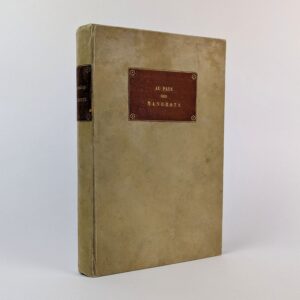
Expedition Antarctique Belge. Au Pays des Manchots: Recit du Voyage de la Belgica
AU$2,200.00 Read MoreAdd to cartGeorges Lecointe
Bruxelles: Societe Belge de Libraire, 1904.Account of the captain of the RV Belgica, the second in command of the first Belgian Antarctic Expedition of 1897-1899. Considered the first expedition of the Heroic Age of Antarctic Exploration, it was the first expedition to spend the entire winter in the region. Trapped in the ice for a year, they were ill prepared, the polar night driving a number of the crew mad and with scurvy setting in they were forced to subsist on penguin (largely considered inedible). Despite the challenges much scientific data was gathered including around 700 rock samples, for the first time meteorological observations were recorded for a full Antarctic year, and 188 new animal species were discovered. This superlative copy bound in full vellum with leather labels and decorative endpapers, and with a bound in manuscript letter dated 26 July 1904 from Lecointe to Madame Van Halteren requesting her to give the book to her daughter, Miss Van Halteren, signed by Lecointe, also with his monogram stamp and the stamp of the Royal Observatory of Belgium.
-

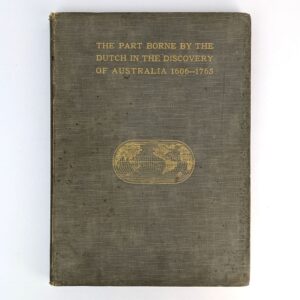
Het Aandeel der Nederlanders in de Ontdekking van Australie, 1606-1765 / The Part Borne by the Dutch in the Discovery of Australia, 1606-1765
AU$150.00 Read MoreAdd to cartJ. E. Heeres
Leiden and London: E. J. Brill and Luzac & Co., 1899.The side-by-side bilingual work on the Dutch exploration of Australia.
-
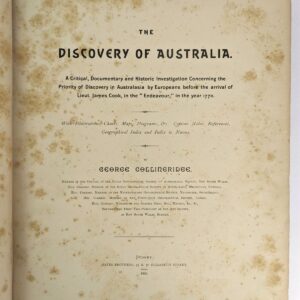
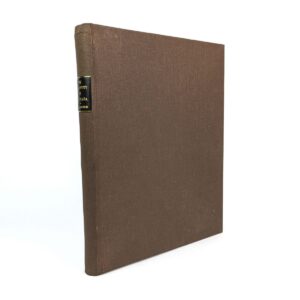
The Discovery of Australia
AU$200.00 Read MoreAdd to cartGeorge Collingridge
Sydney: Hayes Brothers, 1895.A Critical, Documentary and Historic Investigation Concerning the Priority of Discover in Australasia by Europeans before the arrival of Lieut. James Cook, in the “Endeavour,” in the year 1770. With illustrations, charts, maps diagrams, &c. copious notes, references, geographical index and index to names. FERGUSON 8465.
-
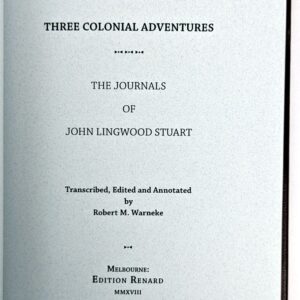
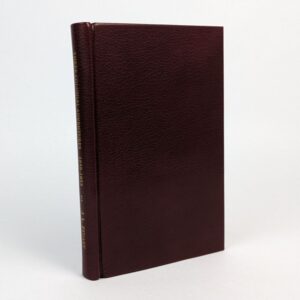
Three Colonial Adventures
AU$285.00 Read MoreAdd to cartJohn Lingwood Stuart
Melbourne: Edition Renard, 2018.One of the Deluxe Edition of 70 numbered copies in full leather (from a total edition of 215). John Lingwood Stuart’s three manuscript journals, here collected under the title THREE COLONIAL ADVENTURES, have never before been published. Written in 1849, 1851, and 1852-53 they provide a fascinating insight into the migration of a young man from England to Adelaide in South Australia and his subsequent adventures in his new land. His first journal comprises an interesting shipboard diary of his voyage to Australia on board the Minerva. Whilst not a particularly remarkable voyage in itself, his journal captures beautifully the experience of a migrant in the mid-nineteenth century, conveying with gentle humour just what it was like to be a passenger in those times, the routine, the duties, the boredom, the occasional excitement, the wildlife observed, the sickness and (fortunately few) deaths, and of course, the weather. His second journal is much more unusual and historically important. In 1851 Stuart signed on to a sealing expedition in South Australian and Kangaroo Island waters on the cutter Jane and Emma and he gives a detailed daily account of the progress of the voyage, the places visited, seals killed, skins and oil obtained, other wildlife observed, and encounters with sailors, settlers, and Aborigines. Following his return to Adelaide, in 1852 Stuart embarked on another expedition, this time overland by bullock dray to the diggings at the Bendigo goldfields. Again, historically important, and one of the few detailed journals of the time, Stuart recounts his adventures following the Murray and Loddon Rivers including comments on the squatters and Aboriginal people encountered along the way, the difficulties of travelling with bullocks and much else. Arriving at Bendigo he and his companions spent a few days investigating various gullies before commencing digging in Geelong Gully where almost immediately they found gold. All three journals have dated daily entries and have been meticulously transcribed, but the wealth of interesting information has been hugely supplemented by the detailed and informative footnotes and the account of Stuart’s life (he subsequently became a mining engineer) by Robert M. Warneke. In addition Robert has provided maps of the two Australian journeys, carefully reconciling the places mentioned by Stuart to the geography; a detailed analysis of the seal catch and notes to the wildlife encountered in all three journeys; and an extensive bibliography of the references used. A detailed description of the original journals is provided by Julien Renard. An entirely new and original work, never before published, elegantly typeset with sparing and judicious use of colour to enhance the text and capture the flavour of the manuscript originals, and the volumes have been finely hand bound by Peter Lewis.
-
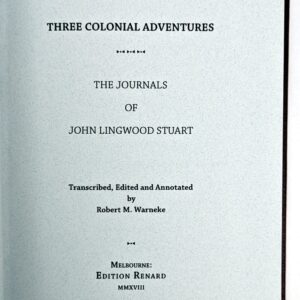
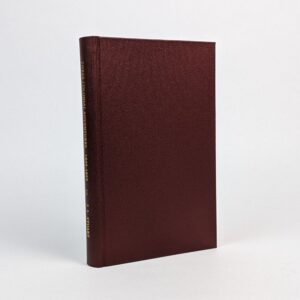
Three Colonial Adventures
AU$175.00 Read MoreAdd to cartJohn Lingwood Stuart
Melbourne: Edition Renard, 2018.One of the Standard Edition of 100 numbered copies (from a total edition of 215). John Lingwood Stuart’s three manuscript journals, here collected under the title THREE COLONIAL ADVENTURES, have never before been published. Written in 1849, 1851, and 1852-53 they provide a fascinating insight into the migration of a young man from England to Adelaide in South Australia and his subsequent adventures in his new land. His first journal comprises an interesting shipboard diary of his voyage to Australia on board the Minerva. Whilst not a particularly remarkable voyage in itself, his journal captures beautifully the experience of a migrant in the mid-nineteenth century, conveying with gentle humour just what it was like to be a passenger in those times, the routine, the duties, the boredom, the occasional excitement, the wildlife observed, the sickness and (fortunately few) deaths, and of course, the weather. His second journal is much more unusual and historically important. In 1851 Stuart signed on to a sealing expedition in South Australian and Kangaroo Island waters on the cutter Jane and Emma and he gives a detailed daily account of the progress of the voyage, the places visited, seals killed, skins and oil obtained, other wildlife observed, and encounters with sailors, settlers, and Aborigines. Following his return to Adelaide, in 1852 Stuart embarked on another expedition, this time overland by bullock dray to the diggings at the Bendigo goldfields. Again, historically important, and one of the few detailed journals of the time, Stuart recounts his adventures following the Murray and Loddon Rivers including comments on the squatters and Aboriginal people encountered along the way, the difficulties of travelling with bullocks and much else. Arriving at Bendigo he and his companions spent a few days investigating various gullies before commencing digging in Geelong Gully where almost immediately they found gold. All three journals have dated daily entries and have been meticulously transcribed, but the wealth of interesting information has been hugely supplemented by the detailed and informative footnotes and the account of Stuart’s life (he subsequently became a mining engineer) by Robert M. Warneke. In addition Robert has provided maps of the two Australian journeys, carefully reconciling the places mentioned by Stuart to the geography; a detailed analysis of the seal catch and notes to the wildlife encountered in all three journeys; and an extensive bibliography of the references used. A detailed description of the original journals is provided by Julien Renard. An entirely new and original work, never before published, elegantly typeset with sparing and judicious use of colour to enhance the text and capture the flavour of the manuscript originals, and the volumes have been finely hand bound by Peter Lewis.
-
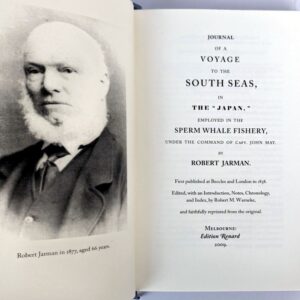

Journal of a Voyage to the South Seas, in the Japan,
AU$625.00 Read MoreAdd to cartRobert Jarman
Melbourne: Edition Renard, 2009.employed in the Sperm Whale Fishery, under the Command of Capt. John May. First published at Beccles and London in 1838. Edited, with an Introduction, Notes, Chronology, and Index, by Robert M. Warneke, and faithfully reprinted from the original. Special limited edition of 30 numbered copies within the overall limitation of 200 copies for sale. A new edition of the very rare account first published in two issues in 1838 and until now never reprinted – see FORBES 1104, also BAGNALL 2685 and FERGUSON 2526 (and 2526a). Robert Jarman, the son of a printer at Beccles, joined the crew as a young man of twenty years on a whaling voyage to the South Seas in 1831. During the next three to four years young Robert’s forecastle jottings were transformed into a lively and well-crafted tale. The primary theme is the hard, unrelenting search for whales, reflected in Jarman’s methodical recording of encounters with other whalers and elaborated with graphic descriptions of the excitements and dangers of whaling with the inevitable accidents, injuries, and tragic deaths. After cruising the Japan Sea, the ship reached the Hawaiian Islands at the end of October 1832 and anchored at Honolulu. “The author noted 18 whalers in port. He describes the harbor and the method by which ships were towed in, and the Honolulu Fort, and the town and its native people” (Forbes). He tells also of surviving gales and near disaster when the Japan was dismasted in a hurricane, which forced the stricken ship to Sydney for extensive repairs. Jarman gives an interesting account of Sydney, with perceptive comments on convicts and their management and the Aboriginals and their customs including the use of the boomerang. Subsequently the ship cruised around Rotuma, the Fiji Islands and New Zealand before returning to England. Along the way Jarman gives accounts of visits to bays and islands to trade for fresh provisions, and of longer stays at various ports for wood, water and to benefit the crew. A welcome respite from the rigors and grinding repetition of shipboard life, Jarman was obviously captivated by those of the natives who were friendly, and he perceptively and sympathetically described their modes of life, customs, and the effects of European intercourse and colonization. The scope and appeal of this book is enhanced by some lengthy passages on natural history, including observations on the social behaviour of sperm whales and encounters with sharks, other fish and birds. Because of several chance but pertinent events he was able to include commentaries on several dramatic episodes of Pacific maritime history, such as the Bligh mutiny and its aftermath, and recent massacres of ships crews by islanders — a constant fear for lightly-armed visiting whalers.
-
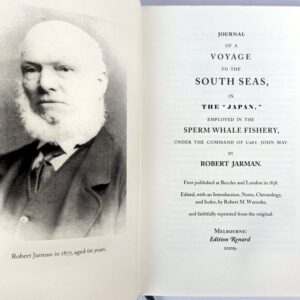

Journal of a Voyage to the South Seas, in the Japan,
AU$275.00 Read MoreAdd to cartRobert Jarman
Melbourne: Edition Renard, 2009.employed in the Sperm Whale Fishery, under the Command of Capt. John May. First published at Beccles and London in 1838. Edited, with an Introduction, Notes, Chronology, and Index, by Robert M. Warneke, and faithfully reprinted from the original. Deluxe limited edition of 70 numbered copies within the overall limitation of 200 copies for sale. A new edition of the very rare account first published in two issues in 1838 and until now never reprinted – see FORBES 1104, also BAGNALL 2685 and FERGUSON 2526 (and 2526a). Robert Jarman, the son of a printer at Beccles, joined the crew as a young man of twenty years on a whaling voyage to the South Seas in 1831. During the next three to four years young Robert’s forecastle jottings were transformed into a lively and well-crafted tale. The primary theme is the hard, unrelenting search for whales, reflected in Jarman’s methodical recording of encounters with other whalers and elaborated with graphic descriptions of the excitements and dangers of whaling with the inevitable accidents, injuries, and tragic deaths. After cruising the Japan Sea, the ship reached the Hawaiian Islands at the end of October 1832 and anchored at Honolulu. “The author noted 18 whalers in port. He describes the harbor and the method by which ships were towed in, and the Honolulu Fort, and the town and its native people” (Forbes). He tells also of surviving gales and near disaster when the Japan was dismasted in a hurricane, which forced the stricken ship to Sydney for extensive repairs. Jarman gives an interesting account of Sydney, with perceptive comments on convicts and their management and the Aboriginals and their customs including the use of the boomerang. Subsequently the ship cruised around Rotuma, the Fiji Islands and New Zealand before returning to England. Along the way Jarman gives accounts of visits to bays and islands to trade for fresh provisions, and of longer stays at various ports for wood, water and to benefit the crew. A welcome respite from the rigors and grinding repetition of shipboard life, Jarman was obviously captivated by those of the natives who were friendly, and he perceptively and sympathetically described their modes of life, customs, and the effects of European intercourse and colonization. The scope and appeal of this book is enhanced by some lengthy passages on natural history, including observations on the social behaviour of sperm whales and encounters with sharks, other fish and birds. Because of several chance but pertinent events he was able to include commentaries on several dramatic episodes of Pacific maritime history, such as the Bligh mutiny and its aftermath, and recent massacres of ships crews by islanders — a constant fear for lightly-armed visiting whalers.
-
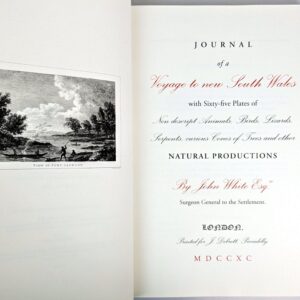
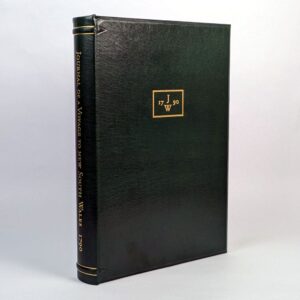
Journal of a Voyage to New South Wales
AU$3,250.00 Read MoreAdd to cartJohn White
Melbourne: Edition Renard, 2002.Edition of 212 numbered copies, 200 only for sale, this being one of 40 deluxe copies with the plates in both coloured and uncoloured states. This sumptuous new edition is reprinted with the text entirely reset in Garamond, attractively printed in black, red, and green, and the plates enlarged by 50%. The plates, by Sarah Stone, F. P. Nodder, and other fine artists comprise 29 of birds (including splendid parrots), 10 of reptiles and amphibians, 7 mammals (marsupials and the Dingo), 6 of fishes, 9 of plants (including magnificent Banksias), 2 of invertebrates, and 2 of Aboriginal weapons and artefacts. In the original edition the leaf Hh4 is cancelled in some copies with a variant text describing in the cancelled state a description of the Wattled Bee-Eater, or Merops, Female and in the uncancelled state a description of the male bird. Both texts have been reproduced here and there are some bibliographical and publishing notes appended. This was the first natural history book on Australia of any significance to be published after the arrival of the First Fleet and has never before been republished with the plates in colour. Edition Renard was awarded two Gold Medals at the 20th National Print Awards, and a Certificate of Manufacturing Excellence of the Victorian Manufacturers Hall of Fame for this book, the first publication under the imprint.
-
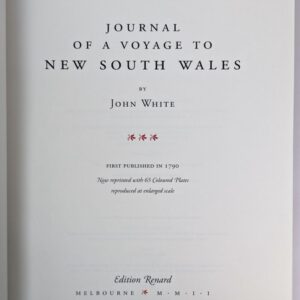
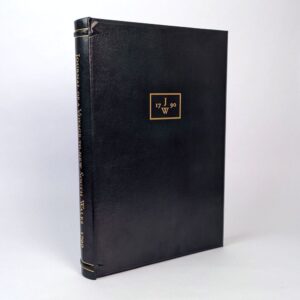
Journal of a Voyage to New South Wales
AU$2,375.00 Read MoreAdd to cartJohn White
Melbourne: Edition Renard, 2002.Edition of 212 numbered copies, 200 only for sale, this one of 150 numbered copies of the Standard Edition. This sumptuous new edition is reprinted with the text entirely reset in Garamond, attractively printed in black, red, and green, and the plates enlarged by 50%. The plates, by Sarah Stone, F. P. Nodder, and other fine artists comprise 29 of birds (including splendid parrots), 10 of reptiles and amphibians, 7 mammals (marsupials and the Dingo), 6 of fishes, 9 of plants (including magnificent Banksias), 2 of invertebrates, and 2 of Aboriginal weapons and artefacts. In the original edition the leaf Hh4 is cancelled in some copies with a variant text describing in the cancelled state a description of the Wattled Bee-Eater, or Merops, Female and in the uncancelled state a description of the male bird. Both texts have been reproduced here and there are some bibliographical and publishing notes appended. This was the first natural history book on Australia of any significance to be published after the arrival of the First Fleet and has never before been republished with the plates in colour. Edition Renard was awarded two Gold Medals at the 20th National Print Awards, and a Certificate of Manufacturing Excellence of the Victorian Manufacturers Hall of Fame for this book, the first publication under the imprint.
-
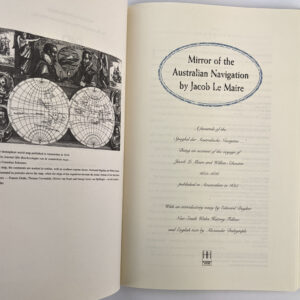
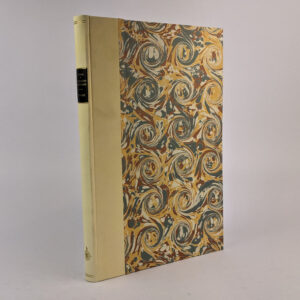
Mirror of the Australian Navigation
AU$60.00 Read MoreAdd to cartJacob Le Maire
Sydney: Hordern House, 1999.Australian Maritime Series No. 5. A facsimile of the ‘Spieghed der Austalische Navigatie…’ being an account of the voyage of Jacob Le Maire and William Schouten, 1615 – 1616, published in Amsterdam in 1622. With an introductory essay by Edward Duyker, New South Wales History Fellow, and English text by Alexander Dalrymple.
-
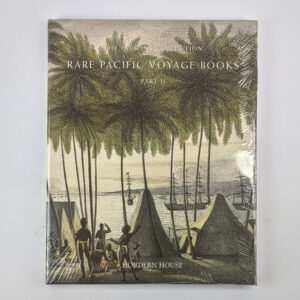
The Parsons Collection: Rare Pacific Voyage Books from the Collection of David Parsons (Part II: La Perouse to Wilkes)
AU$30.00 Read MoreAdd to cartHordern House
Sydney: Hordern House, 2006.Sealed in the original shrinkwrap
-
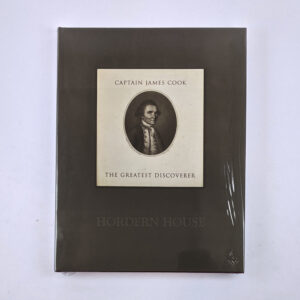
Captain James Cook: The Great Discoverer (The Robert and Mary Anne Parks Collection)
AU$40.00 Read MoreAdd to cartHordern House
Sydney: Hordern House, 2008.This copy in the original shrinkwrap.
-
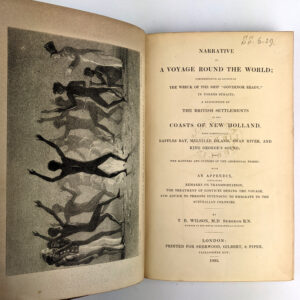
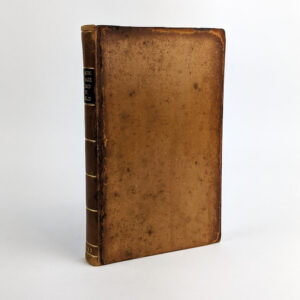
Narrative of a Voyage Round the World; Comprehending an Account of the Wreck of the Ship “Governor Ready”, in Torres Straits;
AU$2,500.00 Read MoreAdd to cartT. B. Wilson
London: Sherwood, Gilbert, & Piper, 1835.A description of the British Settlements of the Coasts of New Holland, more particularly Raffles Bay, Melville Island, Swan River, and King George’s Sound; also, the manners and customs of the Aboriginal Tribes: with an appendix, containing remarks on transportation, the treatment of convicts during the voyage, and advice to persons intending to emigrate to the Australian Colonies. FERGUSON 2073. This copy without the 10 page catalogue of books and the plates bound in a different order.
-
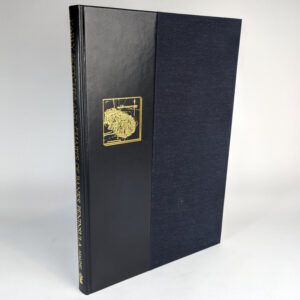
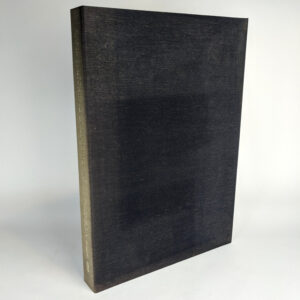
Early Sketches and Charts of Banks Peninsula, 1770-1850
AU$550.00 Read MoreAdd to cartPeter Bromley Maling
Wellington: A. H. & A. W. Reed, 1981.Pre-1850, though mostly 1838-50 sketches and maps of Banks Peninsula, on the east coast of the South Island of New Zealand, by French and British visitors to the region. Limited edition of 500 copies, of which this is number 388.
-
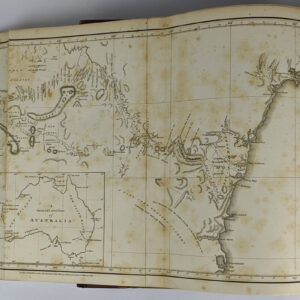
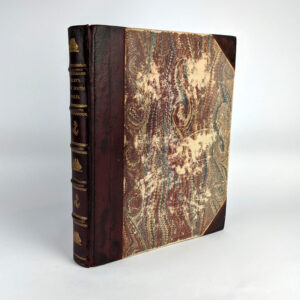
Journals of Two Expeditions into the Interior of New South Wales, Undertaken by Order of the British Government in the Years 1817-18
AU$6,000.00 Read MoreAdd to cartJohn Oxley
London: John Murray, 1820.Oxley’s account of his explorations of the Lachlan and Macquarie Rivers: “the foundation work in the field of Australian inland exploration and the first detailed description of the interior of New South Wales.” (Jonathan Wantrup, Australian Rare Books, 1788-1900) FERGUSON 796, WANTRUP 107.
-
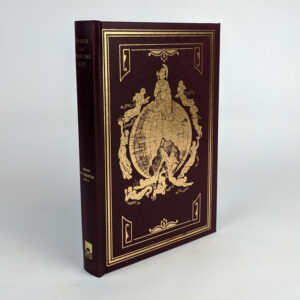
Pearls and Pearling Life
AU$135.00 Read MoreAdd to cartEdwin W. Streeter
Perth: Hesperian Press, 2006.Early Western Australian pearling. First published in 1886.
-

Among Wild Animals and People in Australia
AU$120.00 Read MoreAdd to cartEric Mjoberg
Perth: Hesperian Press, 2012.Originally published in Swedish in 1915 as ‘Bland vilda djur och folk i Australien’. Here translated into English for the first time by Margareta Luotsinen and Kim Akerman. “From October 1910 to August 1911 biologist Erik Mjoberg and his seven man Swedish team travelled by bullock wagon through the West Kimberley collecting invertebrates, birds, mammals, and ethnographic research material. Their ten month journey took them from Derby, along the Fitzroy River upstream to Mount Anderson Station. Some members then went on to Noonkanbah, the St George Ranges and Fitzroy Crossing, while others went south to Mowla Bluff. After the return to Derby two members went to Sunday Island and then followed the stock route across the Leopold Ranges to Mount Barnett. Extensive collections were also made around Derby and Meda Station. Finally the expedition re-convened in Broome where side trips included a coastal trip by pearling lugger collecting marine specimens and another trip to Beagle Bay, collecting birds. Eric Mjöberg’s idiosyncratic text remained in the Swedish language until this long-awaited English translation. Now, for the first time, this unique perspective on biota and people is brought to a new generation of readers with an interest in Kimberley history and geography.” (publisher’s blurb)
-
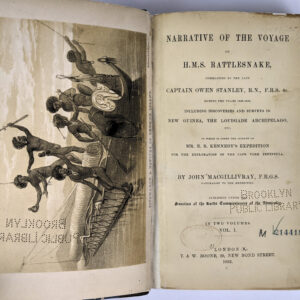
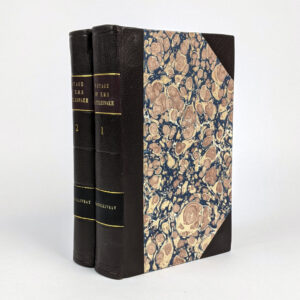
Narrative of the Voyage of H.M.S. Rattlesnake
AU$2,500.00 Read MoreAdd to cartJohn MacGillivray
London: T. & W. Boone, 1852.Commanded by the Late Captain Owen Stanley, R.N., F.R.S. &c. During the Years 1846-1850. Including Discoveries and Surveys in New Guinea, the Louisiade Archipelago, etc. To which is Added the Account of Mr. E. B. Kennedy’s Expedition for the Exploration of the Cape York Peninsula.
